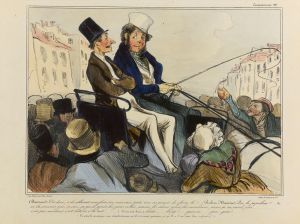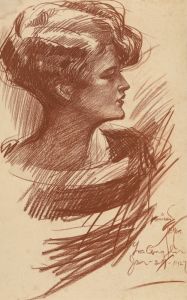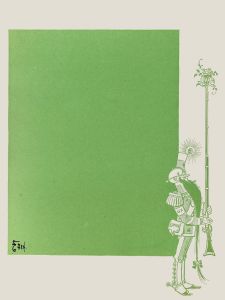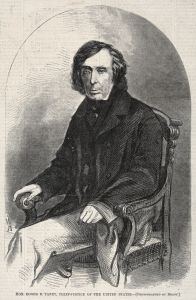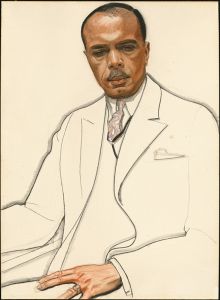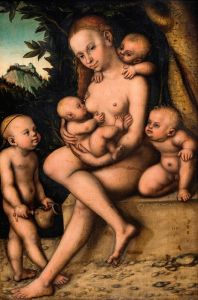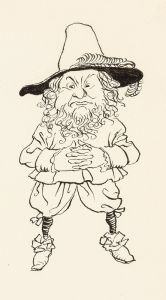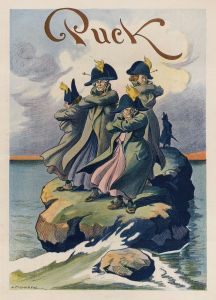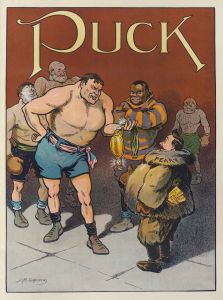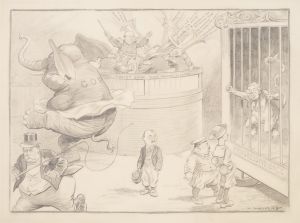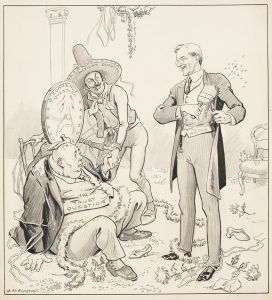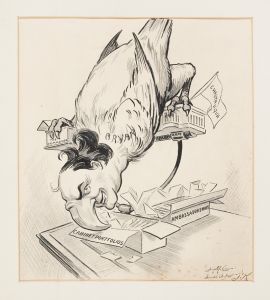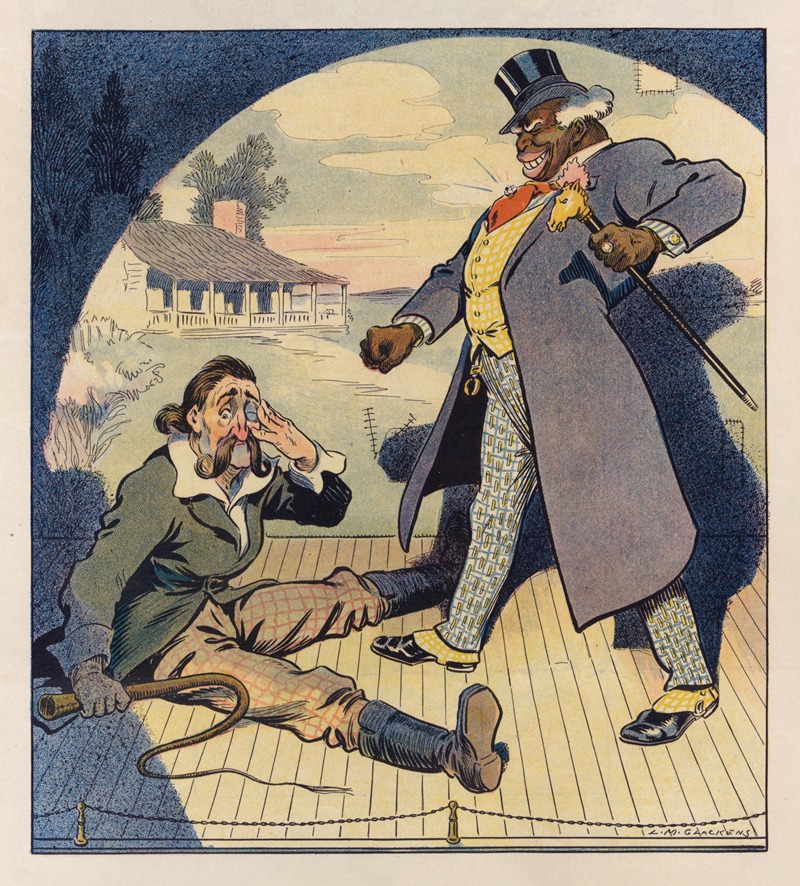
Uncle Tom’s cabin — as it will have to be played if Johnson wins
A hand-painted replica of Louis Glackens’s masterpiece Uncle Tom’s cabin — as it will have to be played if Johnson wins, meticulously crafted by professional artists to capture the true essence of the original. Each piece is created with museum-quality canvas and rare mineral pigments, carefully painted by experienced artists with delicate brushstrokes and rich, layered colors to perfectly recreate the texture of the original artwork. Unlike machine-printed reproductions, this hand-painted version brings the painting to life, infused with the artist’s emotions and skill in every stroke. Whether for personal collection or home decoration, it instantly elevates the artistic atmosphere of any space.
"Uncle Tom’s Cabin — As It Will Have to Be Played If Johnson Wins" is a satirical illustration created by American artist Louis M. Glackens. The artwork was published in the magazine Puck on September 8, 1909. Puck was a prominent American humor magazine known for its colorful cartoons and satirical commentary on political and social issues of the time.
The illustration by Glackens is a response to the racial dynamics and tensions surrounding the boxing match between Jack Johnson and James J. Jeffries. Jack Johnson, an African American boxer, had won the World Heavyweight Championship in 1908, becoming the first black man to hold the title. His victory was a significant event in the history of sports and race relations in the United States, as it challenged the prevailing racial prejudices and the notion of white supremacy in athletics.
The title of Glackens' illustration references Harriet Beecher Stowe's famous anti-slavery novel "Uncle Tom's Cabin," published in 1852. The novel played a crucial role in shaping public opinion against slavery in the United States. By invoking the title of Stowe's work, Glackens draws a parallel between the racial issues of the 19th century and those of the early 20th century.
In the illustration, Glackens depicts a theatrical scene where the characters from "Uncle Tom's Cabin" are portrayed with a racial twist. The central figure, presumably Uncle Tom, is shown as a strong, victorious black man, symbolizing Jack Johnson's triumph in the boxing ring. Surrounding him are white characters in subservient or defeated positions, highlighting the reversal of traditional racial roles and the societal upheaval caused by Johnson's victory.
The illustration reflects the anxieties and racial tensions of the time, as Johnson's success challenged the deeply ingrained racial hierarchy. It also comments on the broader implications of Johnson's victory for African Americans, suggesting that his success could lead to a reevaluation of racial stereotypes and a shift in the social order.
Louis M. Glackens was known for his work as a cartoonist and illustrator, contributing to various publications, including Puck. His illustrations often addressed contemporary social and political issues with humor and satire. "Uncle Tom’s Cabin — As It Will Have to Be Played If Johnson Wins" is a notable example of his ability to capture the complexities of race relations and the impact of significant events on American society.
Overall, the illustration serves as a historical artifact that provides insight into the racial attitudes and social dynamics of early 20th-century America. It underscores the power of sports as a catalyst for social change and the role of satire in reflecting and challenging societal norms.





